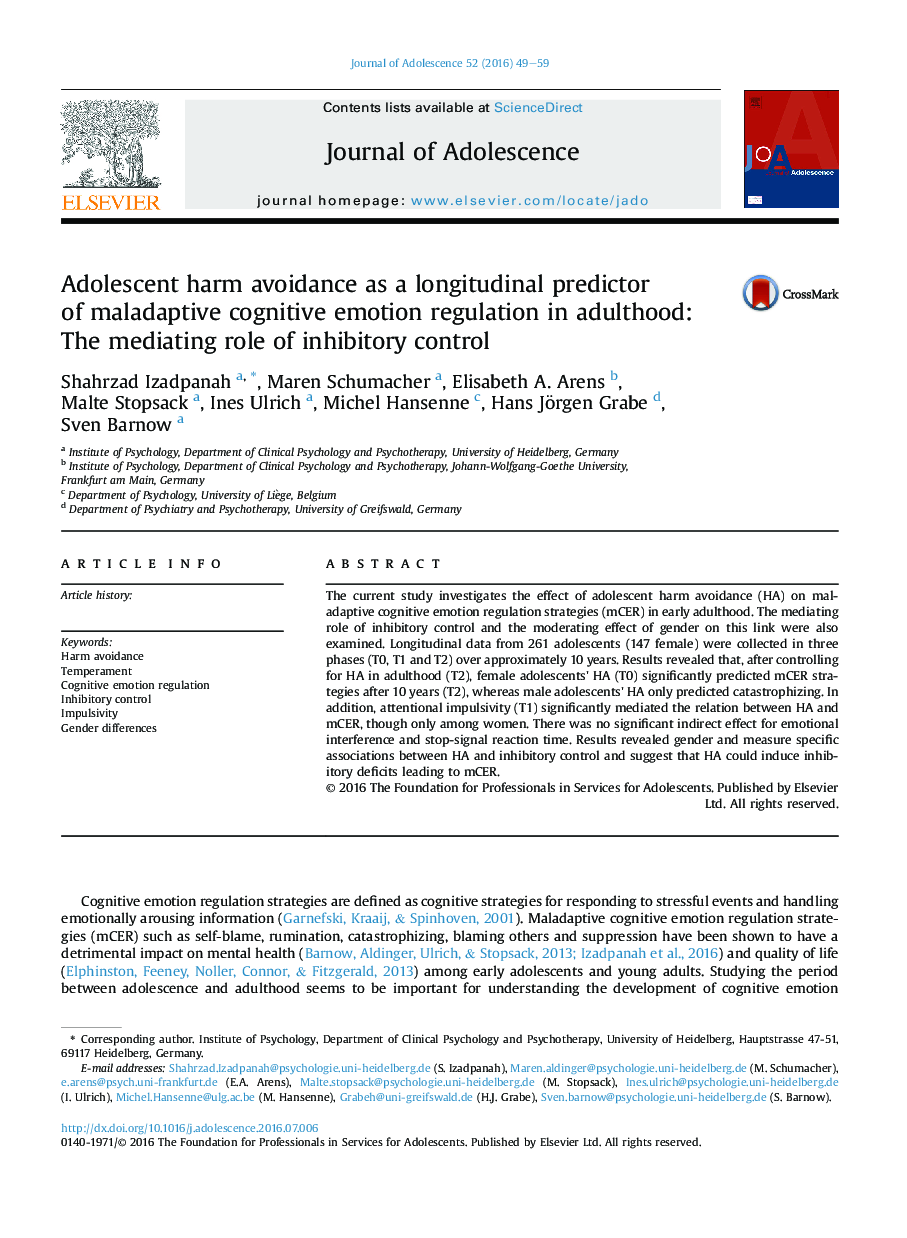| Article ID | Journal | Published Year | Pages | File Type |
|---|---|---|---|---|
| 880531 | Journal of Adolescence | 2016 | 11 Pages |
•HA was related to higher attentional impulsivity among women and lower emotional interference among men.•Attentional impulsivity was associated with increased mCER.•Adolescent HA positively predicted mCER through attentional impulsivity.•Direct and indirect effects were conditioned by gender.
The current study investigates the effect of adolescent harm avoidance (HA) on maladaptive cognitive emotion regulation strategies (mCER) in early adulthood. The mediating role of inhibitory control and the moderating effect of gender on this link were also examined. Longitudinal data from 261 adolescents (147 female) were collected in three phases (T0, T1 and T2) over approximately 10 years. Results revealed that, after controlling for HA in adulthood (T2), female adolescents' HA (T0) significantly predicted mCER strategies after 10 years (T2), whereas male adolescents' HA only predicted catastrophizing. In addition, attentional impulsivity (T1) significantly mediated the relation between HA and mCER, though only among women. There was no significant indirect effect for emotional interference and stop-signal reaction time. Results revealed gender and measure specific associations between HA and inhibitory control and suggest that HA could induce inhibitory deficits leading to mCER.
